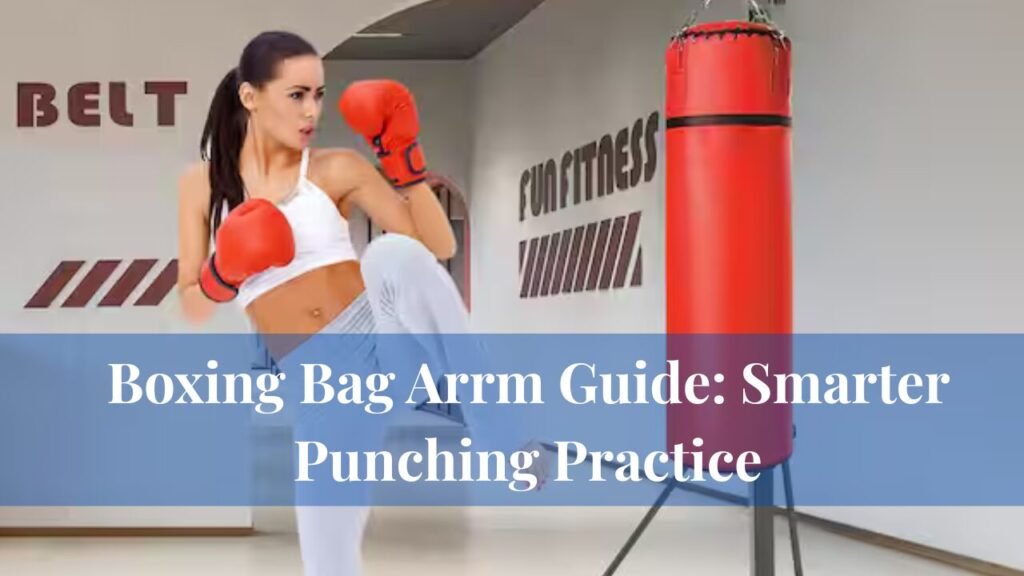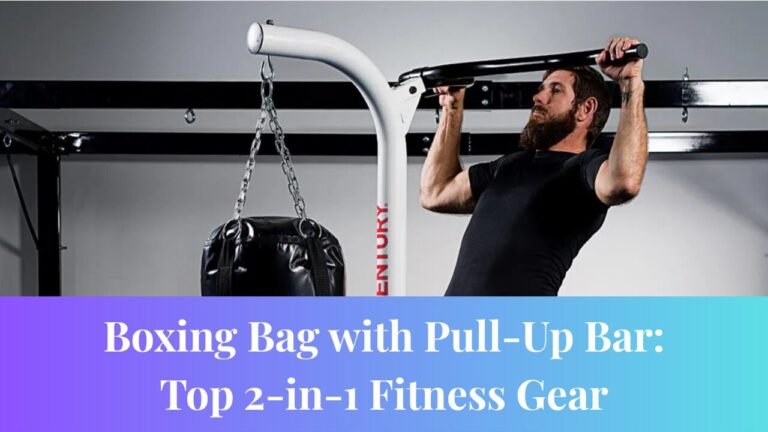When it comes to effective and realistic boxing training, a boxing bag arm is a game-changer. This innovative tool is designed to replicate the unpredictable movements of a real opponent, providing boxers with a much more lifelike training experience. Whether you are a beginner striving to learn proper form or a professional athlete honing advanced techniques, a boxing bag arm enables you to practice a wide range of skills from blocking and slipping to refining combinations all without requiring a training partner. It adds a dynamic component to your regimen, making training sessions more engaging, effective, and realistic.
In this comprehensive guide, we will explore everything you need to know about boxing bag arms, including their benefits, types, key selection factors, and practical training tips.
By the end, you will understand how incorporating a bag arm into your training routine can accelerate your progress, enhance your skills, and become an essential part of your home or gym setup.
What Is a Boxing Bag Arm?
A boxing bag arm is an attachment or add-on designed to connect to a heavy bag or a specialized stand. The typical design consists of adjustable, spring-loaded arms or padded bars that move, rotate, or fold back when struck. This movement closely mimics an opponent’s limbs, allowing athletes to practice defensive and offensive techniques in a realistic scenario. Unlike traditional heavy bags, which remain static and predictable, a bag arm reacts dynamically to your strikes, forcing you to adjust, react, and maintain precision with every punch or defensive maneuver.
Training with a static heavy bag limits your ability to work on timing, accuracy, and reflexes, because the target never fights back or changes its position. A boxing bag arm introduces an element of unpredictability, requiring you to sharpen your reflexes, improve hand-eye coordination, and develop real-world defensive strategies. It simulates an actual sparring experience, making it easier to transition your skills into live matches or partner-based drills.
Why Use a Boxing Bag Arm?
Using a boxing bag arm transforms your training from repetitive routines into highly dynamic and engaging workouts. The benefits extend beyond simply practicing punches. By integrating a reactive element into your sessions, boxers can achieve a deeper level of skill development and conditioning.
First, it enhances your defense. Traditional heavy bags do not require you to block, slip, or weave. In contrast, a bag arm forces you to anticipate movement, react quickly, and develop defensive reflexes. These skills are crucial in live sparring and real matches, as defensive ability can be the difference between winning and losing a fight.
Second, it boosts accuracy. Striking a moving or rotating target forces precise placement of your punches. This level of control over your shots translates directly into improved performance in the ring. Landing a clean punch under pressure becomes more instinctive when trained regularly with a reactive target.
Third, it improves timing and distance management. To connect effectively with a moving arm, you must develop an acute awareness of range, rhythm, and speed. These elements are essential components in all combat sports, where misjudging distance can leave a fighter vulnerable.
Fourth, it provides realistic training. The movement, resistance, and unpredictability of the bag arm simulate a real opponent’s reactions. This realism reduces the gap between solo training and live sparring, making you better prepared for competition or self-defense scenarios.
Finally, it strengthens conditioning. Engaging with a reactive tool keeps the body active, requiring constant movement, rapid response, and controlled energy output. Over time, this type of training improves cardiovascular endurance, muscular responsiveness, and overall stamina.
Types of Boxing Bag Arms
Boxing bag arms are available in several configurations, each offering unique advantages depending on your training goals, available space, and experience level. Understanding the different types can help you choose the most effective tool for your routine.
One common type is the spring-loaded adjustable arm. This versatile design attaches directly to a heavy bag or stand and features a spring mechanism that allows the arm to move back upon impact. Users can often adjust the stiffness and resistance to match their skill level. Spring-loaded arms are excellent for practicing reflexes, blocking techniques, and precise slipping maneuvers because they mimic realistic force and movement patterns.
Another popular design is the rotating bar attachment, also known as a reflex bar. This padded rod connects to a central pivot, allowing it to swing in multiple directions when struck. The movement challenges your peripheral awareness, reaction time, and adaptability, helping you develop the agility required to handle unpredictable opponents.
Wall-mounted bag arms are ideal for users with limited space or those seeking a permanent fixture. Anchored to the wall, these arms provide reliable resistance while maintaining dynamic movement. They are particularly useful for refining the delivery of combinations and developing proper form under pressure.
Full stand units combine heavy bags with attached arms or reflex bars into a single freestanding station. These all-in-one setups are perfect for home gyms or fitness centers, providing a comprehensive training experience. With offense, defense, movement, and conditioning integrated into one unit, they eliminate the need for multiple pieces of equipment and create a complete, immersive training environment.
Benefits of Training with Boxing Bag Arms
Integrating a bag arm into your training regimen provides multiple advantages that enhance skill development, conditioning, and overall performance. One of the primary benefits is the improvement of defensive and evasion skills. Many boxers neglect defense during heavy bag workouts, focusing solely on striking power. A bag arm forces you to block, slip, and weave under or around a moving target, training defensive reflexes that are essential in live sparring.
It also develops timing and rhythm. Being able to anticipate movement and respond accurately is crucial in boxing. Working with a reactive target allows you to fine-tune your timing, ensuring that your strikes land efficiently while your defenses remain active. This rhythmic flow translates seamlessly into competitive settings, where consistent timing and coordinated movement can outmatch raw strength.
Training with a bag arm boosts cardiovascular endurance as well. The constant motion and resistance demand sustained engagement, forcing your muscles and cardiovascular system to work harder than with static bag drills. By maintaining continuous motion and executing combinations while reacting to the bag arm, you develop a high-intensity workout that enhances stamina and muscular endurance simultaneously.
Furthermore, bag arms are accessible to all experience levels. Beginners can start with lower resistance and gradually increase intensity, while advanced fighters can challenge themselves with stiffer, faster-moving arms. This adaptability ensures that the tool remains valuable throughout your progression, providing scalable difficulty that matches your skill level and physical conditioning.
How to Choose the Right Boxing Bag Arm
Selecting the appropriate boxing bag arm requires careful consideration of factors such as training goals, space, and budget. One critical aspect is build quality. Look for durable materials such as heavy-duty steel or hard-impact resin that can withstand repeated strikes without bending or breaking. The padding should be thick enough to absorb shock and protect both the user and the equipment.
Adjustability is another key factor. Models that allow you to modify height, resistance, and stiffness offer a customizable experience, letting you progressively challenge yourself and refine your techniques. Installation type also plays a role. Wall-mounted units conserve space and provide a stable base for precise training, while freestanding stands offer flexibility in placement and can be moved to accommodate different exercises or gym layouts.
Budget considerations are important as well. Basic bag arms may start at around $40, suitable for casual or beginner use. More sophisticated, heavy-duty, or freestanding setups can range up to $300 or higher, representing a worthwhile investment for serious athletes seeking durability, functionality, and long-term performance.
Best Practices for Training with a Boxing Bag Arm
Maximizing the benefits of a boxing bag arm requires thoughtful training practices. Begin each session with a proper warm-up, including light shadowboxing or jump rope exercises, to prepare your muscles and nervous system. Set realistic rounds, starting with 2- to 3-minute intervals and taking brief rests in between. As you progress, gradually increase the duration and intensity of your workouts.
Focus on form first. Accurate mechanics and clean delivery take precedence over power, especially when adapting to a moving target. Incorporating movement around the bag enhances realism and effectiveness, allowing you to practice combinations while avoiding the arm. Training under pressure, whether by shortening rest periods or increasing resistance, helps simulate match conditions, improving mental resilience and physical adaptability.
Consistency is key. Regular practice with a bag arm can build reflexes, sharpen defensive skills, and improve cardiovascular conditioning over time. Treat each session as an opportunity to challenge yourself and develop both technical skill and physical endurance.
Real User Experience
Feedback from users demonstrates the practical impact of boxing bag arms. Jonathan T., a fitness coach with over 10,000 social media followers, shared, “Since I added a boxing bag arm to my home setup, I’ve noticed huge improvements in my defense. It’s like having a training partner who moves back at me, perfect for a busy schedule where I can’t always find a sparring buddy.”
Another user on Etsy commented, “Excellent addition to my gym! My teenage son loves it, and it’s helping him become more comfortable blocking and reacting. The movement feels realistic and challenging, a huge step up from just hitting a heavy bag.” These experiences underscore the value of incorporating a reactive component into boxing training, especially for those practicing at home or without regular sparring partners.
FAQs
What is the purpose of a boxing bag arm?
A boxing bag arm adds motion to your punching practice, helping improve reaction time, defense, and adaptability skills essential for real matches.
Can beginners use a boxing bag arm?
Absolutely. It’s beginner-friendly, allowing new athletes to learn blocking and slipping techniques safely and at their own pace.
Are these suitable for home gyms?
Yes. Many compact, wall-mounted, and freestanding models are designed to fit virtually any space, making them accessible for home setups.
How do I maintain a boxing bag arm?
Wipe it down after each use, check screws regularly, and store it in a dry area to prevent rust or wear. Proper maintenance ensures long-term durability.
Conclusion
For athletes serious about improving their skills, adding a boxing bag arm to your training regimen can be transformative. Whether you are a beginner, intermediate, or advanced fighter, this tool allows you to practice realistic movements, develop strong defensive reflexes, and enhance conditioning in a way that a static heavy bag cannot replicate. By perfecting combinations, learning precise blocking techniques, and staying in peak physical condition, a bag arm becomes an indispensable piece of training equipment. Explore more boxing essentials to create a complete and effective training experience at home or in the gym.




